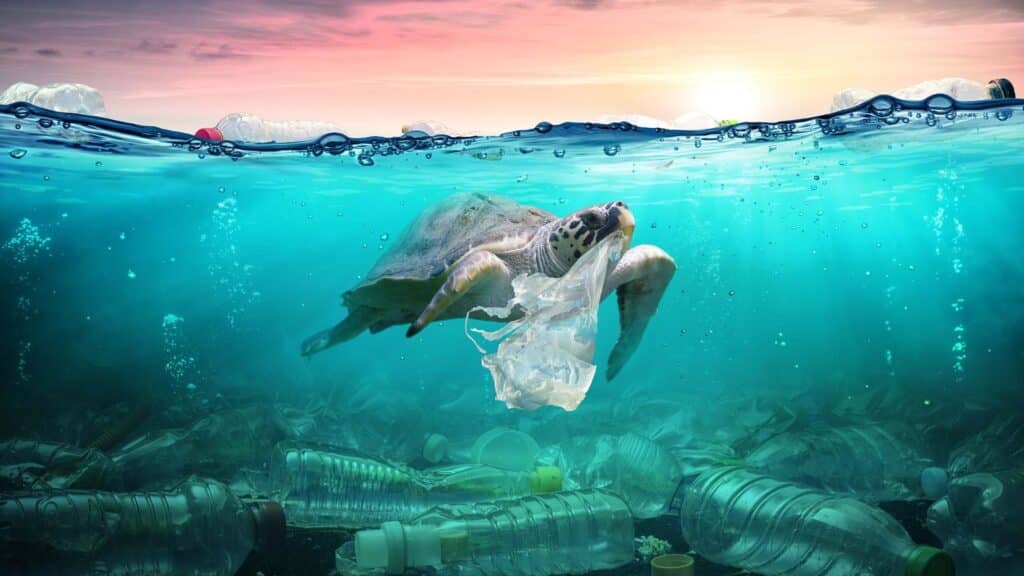
1. Bass: Plastics, You and the Global Treaty
This year, Earth Day (April 22) marks the start of the fourth round of negotiations for a global plastics treaty. Without much public fanfare, delegates from 175 countries — together with hundreds of observers representing industry, academia, health organizations, and environmental groups — will gather in Ottawa, Ontario, to chart the course for the future of plastics and plastic pollution. The stakes could not be higher.
Eleven million metric tons of plastic waste flow into the ocean yearly, irrefutably fueling the climate change crisis. Low-income groups and communities of color are disproportionately located near petrochemical plants, plastic production, and waste incineration facilities, making them especially at risk for harmful environmental and health impacts. Humans are not the only ones at risk: More than 1 million marine creatures are estimated to be killed by plastics in garbage each year.
Thank you for your generous gift that will help us continue the production of this weekly, free publication
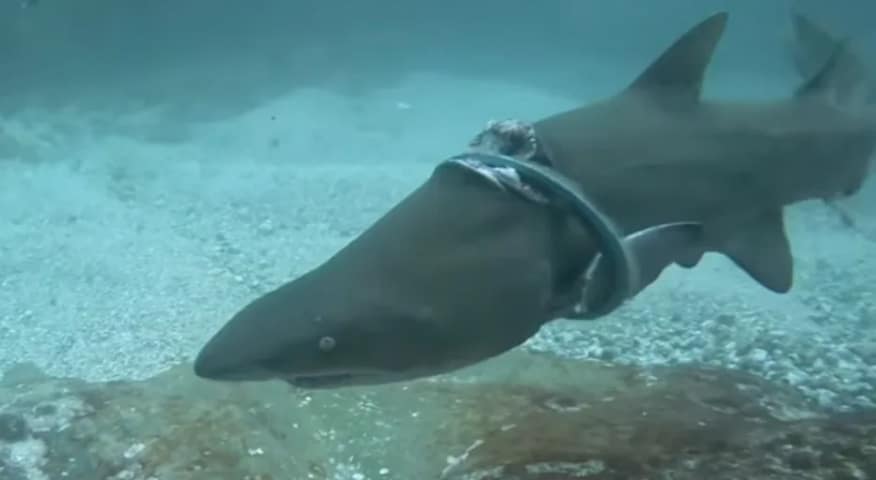
2. Plastics in the Oceans Pose a Huge Threat to the Marine Species
SEAL ROCKS, Australia: A scuba diver noticed a grey nurse shark “wasn’t swimming right.” The almost 2-meter female shark had a deep laceration on its head; the frisbee had ground down its skin and pushed into its body, catching the shark’s two pectoral fins, leaving them stuck and unable to move. The diver was left ‘heartbroken’ knowing she could do nothing to help.
The population of grey nurse sharks has been “suppressed” in the state for years, said ecologist Dr Keith Bishop. Plastics in the ocean are a hazard. Simple behaviors like removing plastics from the sea and correctly disposing of waste in the appropriate bin go a long way in removing the ocean’s litter. We just need to be mindful of our waste and how we dispose of our rubbish.
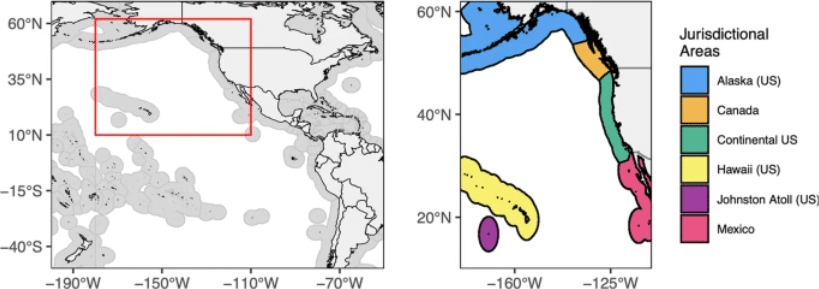
3. Climate Change Continues to Alter the Distribution of Shared Species Between Countries
Climate change is rapidly altering our ocean and shifting the distribution of animals within it. Marine species are undergoing shifts in spatial distributions at alarming rates, which can have widespread, severe ecological implications as community structures and food webs change, posing a significant challenge for human society impacting economic prosperity, food security, and the well-being of coastal communities. NOAA is trying to assess how species movements may change throughout the 21st century.
Planning for climate-ready marine management and conservation will require reliable projections and assessments of shifting human and species movements. Pacific case study found that climate change may redistribute species core habitat across jurisdictional borders of Northeast Pacific nations by the end of the century. It demonstrates the feasibility of using climate-driven habitat projections to assess changes across geopolitical boundaries and discuss how resulting shifts may provoke new management challenges.
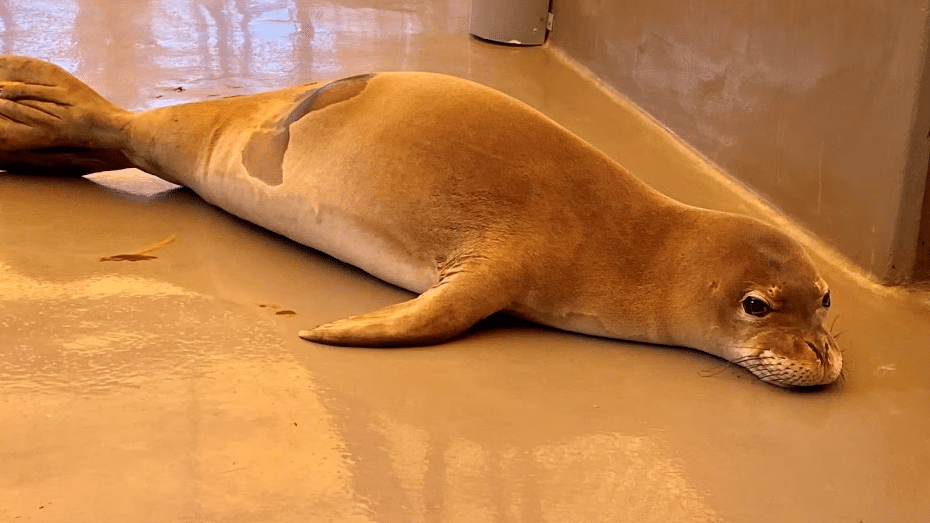
4. Hawaiian Monk Seal Pup Released Back to Ocean After Ingesting Fishing Gear
KAUAI, Hawaii: Thanks to community volunteers and joint agency efforts, an endangered Hawaiian monk seal was released back into the Ocean. The 8-month-old male seal ingested a fishing hook and was treated at The Marine Mammal Center’s Monk Seal Hospital on Hawaii Island. Fishing gear ingestion poses a life-threatening health risk to Hawaiian monk seals.
For an endangered species like the Hawaiian monk seal, every patient matters. NOAA Fisheries recommends these best practices to reduce injuries to monk seals when fishing, and the Marine Mammal Center reminds the public to keep a safe distance of at least 50 feet from monk seals and 150 feet from mom-pup pairs.
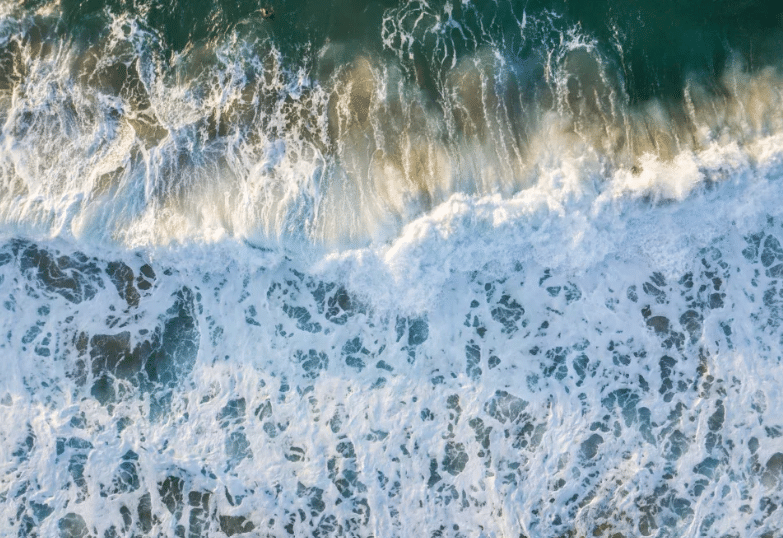
5. The UN Ocean Decade Week Will Take Place From April 8 to 12 in Barcelona
The Ocean Decade was officially launched in January 2021. It provides a convening framework for a wide range of stakeholders across the world to engage and collaborate outside their traditional communities to trigger nothing less than a revolution in ocean science.
The President of Seychelles, Wavel Ramkalawan, will participate in the upcoming UN Ocean Decade Conference in Barcelona in his capacity as one of the Patrons of the Ocean Decade Alliance. Following the UN Decade Conference, he will proceed to Athens to attend the 9th Ocean Conference from April 15 to 17, which will be held under the theme “Our Ocean, An Ocean of Potential.” 2024 is the 10th anniversary of the first inauguration of the Our Ocean Conference in the USA.
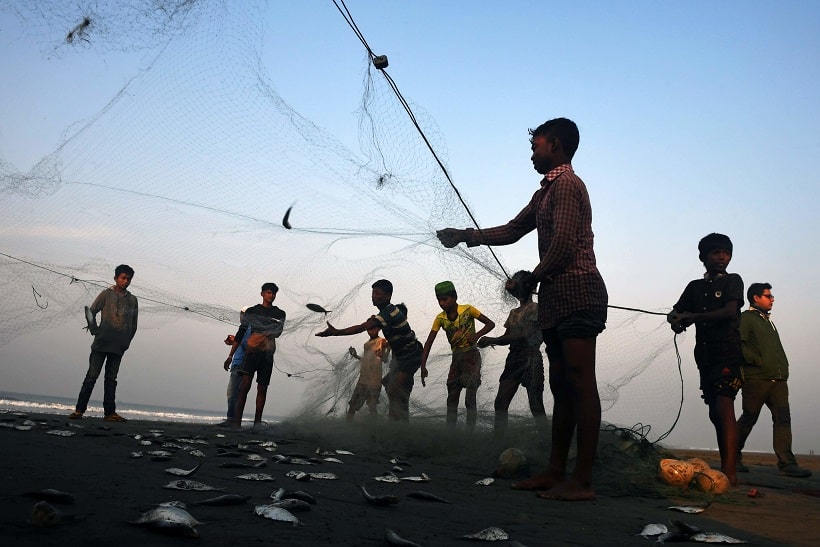
6. India Implementing 61-Day Ban on Marine Fishing
India: Starting April 15th, 2024, the government has implemented conservation measures during the prawns and fish breeding season. The Fisheries Department officials have issued ban orders on marine fishing by all registered mechanized and motorized fishing vessels in territorial water.
The Department of Fisheries, in association with the Coast Guard, Coastal Security Police, Navy, and Revenue Department officials, will conduct patrolling to ensure strict implementation of the ban, the officials said.
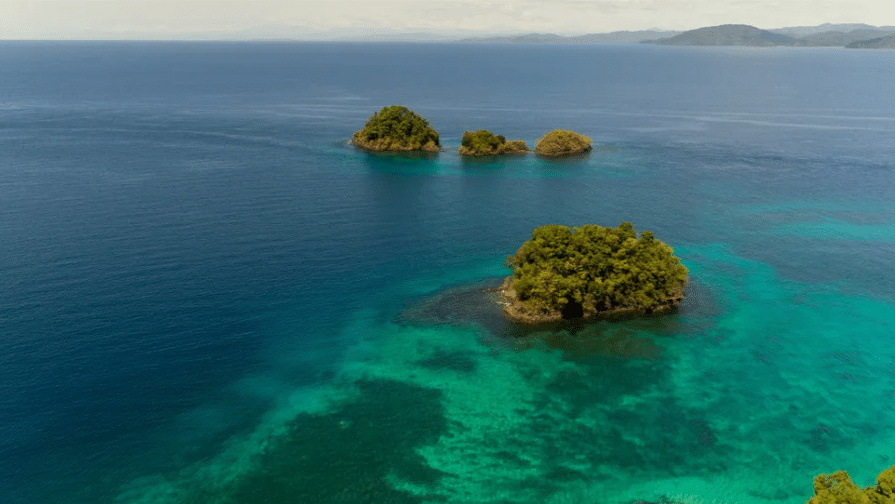
7. Atypical Gathering of Rare Prickly Sharks in Panama
Panama: Rarely-seen deep-sea sharks have been spotted mysteriously gathering off a seamount near Panama. It was the first time the species had been documented in the area. The elusive prickly sharks, which have bodies covered by thorny, modified teeth, prefer to be in deeper waters, which makes them difficult to observe.
Although information on the distribution of this species is scarce, they have been observed in Oregon and Japan in their northern range, down to Chile and New Zealand. Scientists believe these gatherings were “deliberate.” The researchers are still determining why the sharks were coming together, but it could be related to feeding. Confirming the presence of prickly sharks around these seamounts is essential for conserving these biodiversity hotspots.
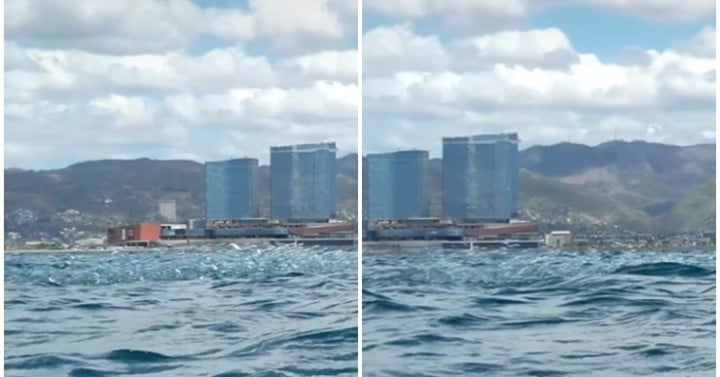
8. ‘Sardinella Surface Run’ Indicates Improved Cebu City Marine Habitat
CEBU CITY, The Philippines — Regular clean-up activities in this capital city’s coastal area have produced good results, as shown in a video of “Sardinella surface run” in the local seawater, the vice mayor said on Tuesday. Vice Mayor Raymond Alvin Garcia posted a video of a school of fish seemingly playing on the surface of the water, saying, “After three years of regular reef cleanups, and by working hand-in-hand with our fisherfolk…we can now see a school of juvenile gold stripe sardinella, better known by its local name ‘mangsi.’
This captured moment is seen as an indication of improved marine habitat in the Cebu City coastal area. In March last year, a temporary mooring buoy was set up in the middle of the 1.2-hectare Cebu City Reef, where boats no longer need to drop anchor and risk destroying corals and other marine life.
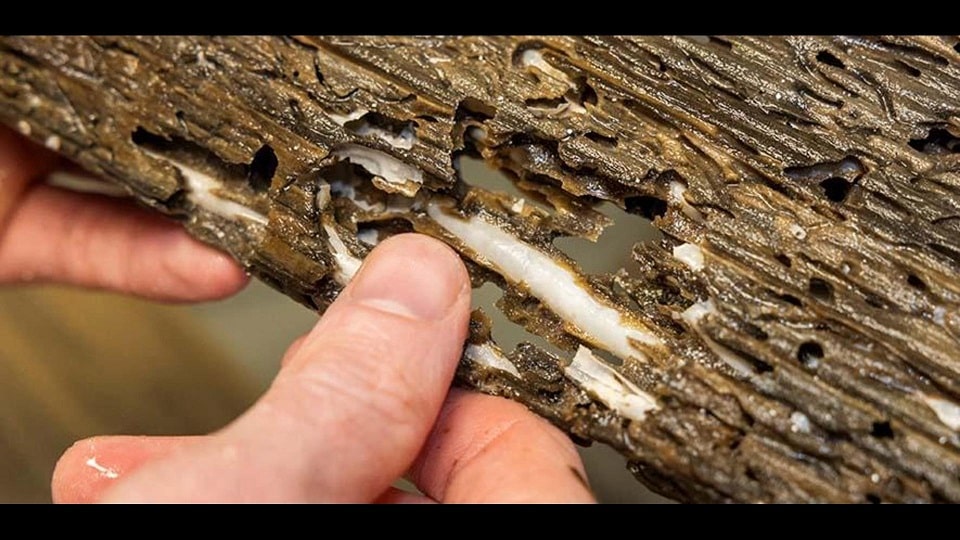
9. Naked Clam: Ship-Eating Worms Could Soon Hit UK Supermarket Shelves
UK—Scientists at Cambridge and Plymouth Universities are growing ship-eating sea worms. The worms are intended to be consumed as an alternative to fish. Shipworms are the most destructive of the marine borers. When they find suitable lodgement on wood, they develop into a new form and bury themselves in the wood. Shipworms are known for causing trouble for Christopher Columbus. During his voyages to the Caribbean, these organisms weakened the hulls of his vessels.
Cod, haddock, salmon, tuna, and prawns comprise 80 percent of the country’s seafood. They are fished through the harmful and often unsustainable method called trawling, an industrial fishing practice involving dragging heavy nets over the seafloor. Rototilling the seabed and all bottom-dwelling plants and animals destroys the natural habitat. Scientists hope the shipworm provides people with the benefits of a fish-rich diet that is more sustainable.
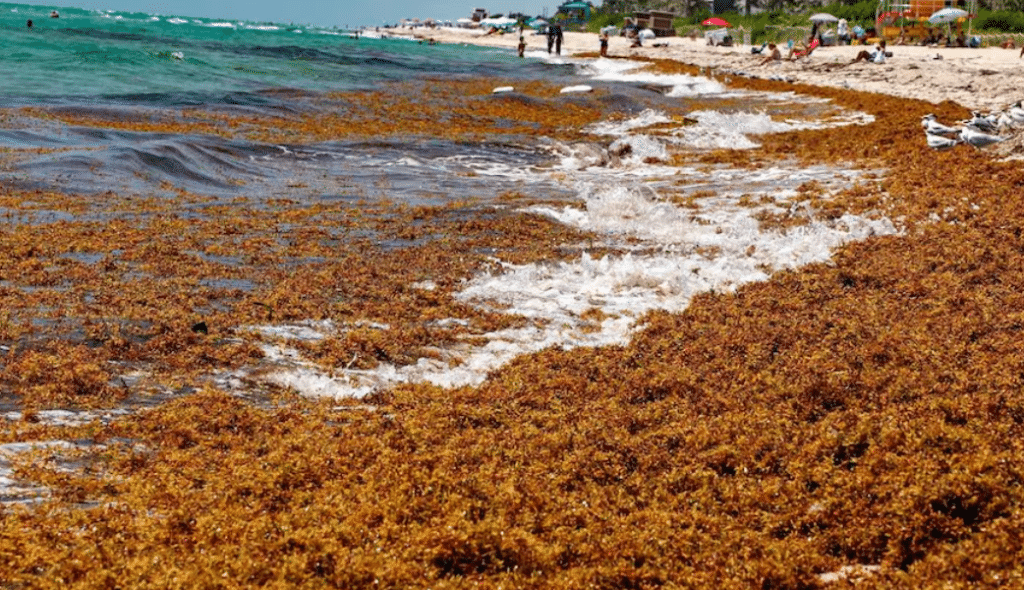
10. FAU Lands 1.3 Million Dollars (US) Grant to ‘Clean up’ Stinky Seaweed in Florida
Flordia, USA, The emergence of a massive expanse of Sargassum, the Great Atlantic Sargassum Belt, has wreaked havoc on ecosystems and economies throughout the Caribbean. Conversely, this stinky brown seaweed provides vital habitats for marine life, including loggerhead sea turtles. Decomposing Sargassum produces hydrogen sulfide and ammonia, which can result in human and environmental health impacts. Once Sargassum deluges beaches, removing, disposing, and repurposing the seaweed presents many logistical and economic challenges.
To address these challenges, researchers from Florida Atlantic University’s Harbor Branch Oceanographic Institute have received a $1.3 million grant from the Florida Department of Emergency Management for a project assessing the feasibility of in-water harvesting of this floating brown seaweed in Florida. Currently, in-water harvesting of Sargassum is not permitted due to its designation as an Essential Fish Habitat (EFH) and critical habitat for sea turtles.
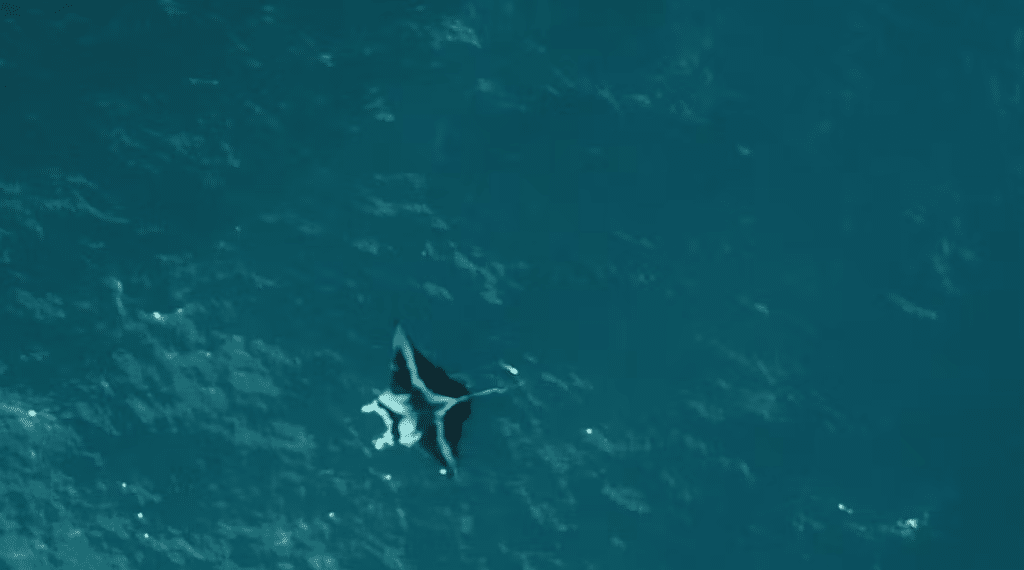
11. New Research in Raja Ampat Reveals Vital Insights Into Protecting Vulnerable Reef Manta Rays
SOUTHWEST PAPUA, Indonesia — New research has detailed the movement patterns and spatial networks of reef manta rays within the Raja Ampat archipelago, providing crucial information to protect this globally vulnerable species. The paper, entitled “Spatial connectivity of reef manta rays across the Raja Ampat archipelago, Indonesia” and published in the Royal Society Open Science, found reef manta rays frequently move between nearby essential habitats, such as cleaning stations and feeding sites, and only occasionally embark on long-distance travels within the archipelago.
The five-year study tracked over 70 adult manta rays and used an advanced network analysis based on data from over 30 acoustic receivers. The research sheds light on the complex movement networks of reef manta rays in Raja Ampat, emphasizing the need for a nuanced approach to their conservation.
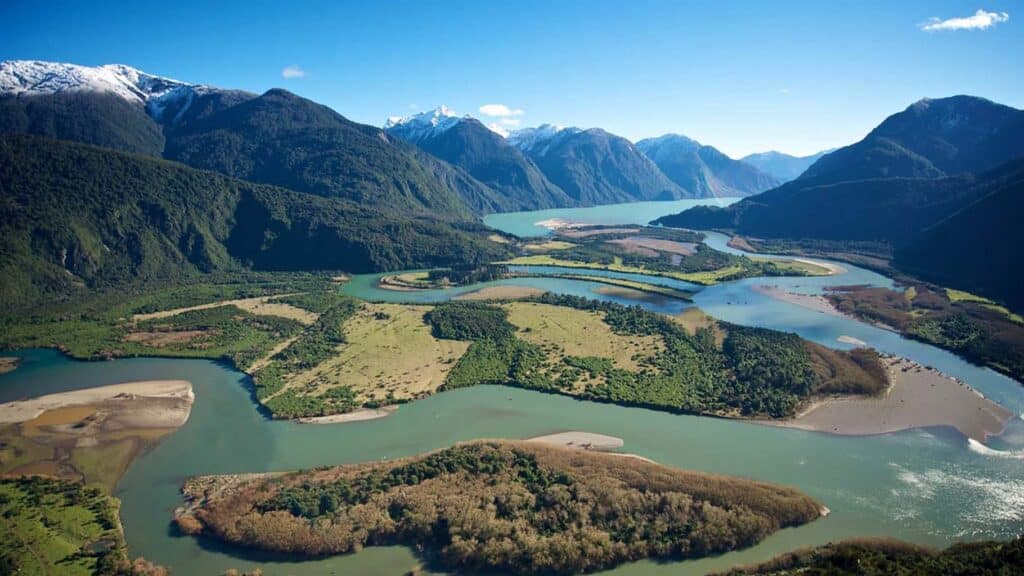
12. In the Category of “Did You Know?” Who are Kristine and Douglas Tompkins, and what is Tompkins Conservation’s mission?
If the answer to the questions above is “no,” a review of this article is a must-read! Driven to confront the global crises of climate change and biodiversity loss, Tompkins Conservation and its independent nonprofit offspring organizations, Rewilding Argentina and Rewilding Chile, have spent over three decades protecting and rewilding big, wild, and connected landscapes so that human communities, animals and plants can thrive.
Collaborating with public and private partners, Tompkins Conservation drove the creation or expansion of fifteen national parks, including two marine national parks, protecting 14.8 million acres of land and 30 million acres of ocean in Argentina and Chile as intact ecosystems. The story is told in Wild Life, released in 2023 by National Geographic Documentary Films. Click the link for “the rest of the story”!
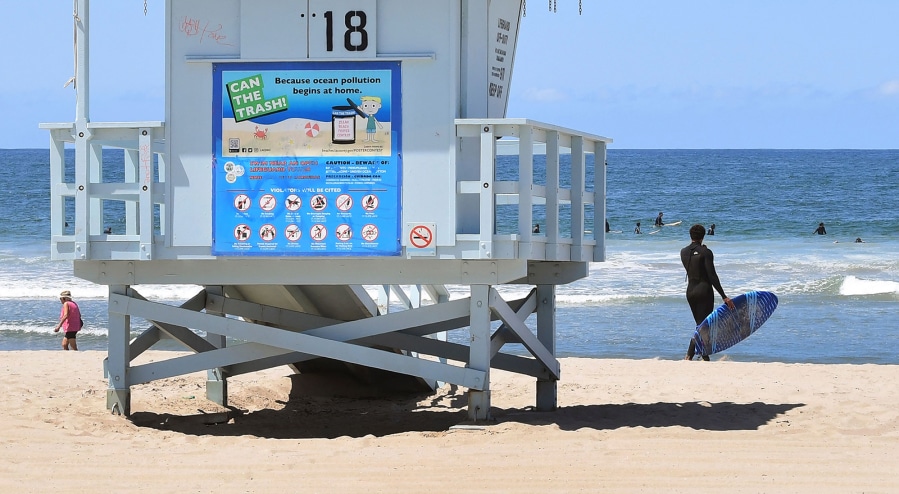
13. Lack of Funding Puts Shark Research Program at Risk
LOS ANGELES, Calif. — A program that lets lifeguards know when great white sharks get within about 100 yards of specific state beaches is at risk of shutting down after running out of state funding. A Cal State Long Beach program developed this unique system about six years ago, and hundreds of juvenile white sharks have since been tagged for monitoring.
The technology serves less as an “early warning system” than a scientific tool to help lifeguards “better manage beaches,” The team of 15 people, including paid students, operates on a budget of roughly $1 million per year. But the state’s dire budget outlook has halted extra spending amid a projected deficit of at least $38 billion. Scientific progress could stall without another infusion of money to continue the program.
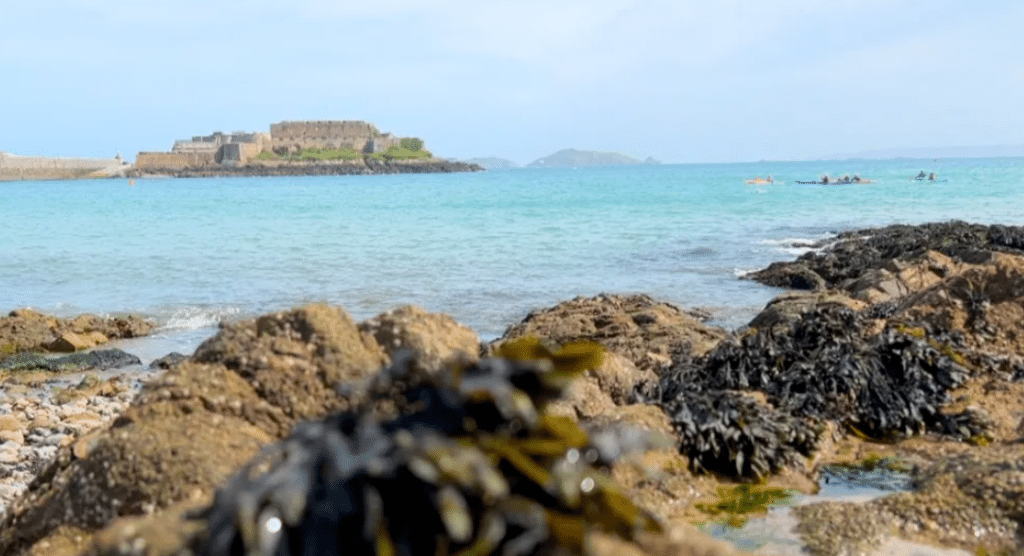
14. Guernsey Islanders Asked to Document Seaweed and Shark Eggs via “Citizen Science Projects”
Two marine “citizen science” projects will challenge volunteers to survey 14 species of seaweed and varieties of shark egg cases, known as Mermaid Purses. Guernsey’s Nature Commission hopes the data gathered can help conserve native species. The commission’s ecologist, Charlotte Burgoine, said, “Getting the public involved is essential.”
Eight beach sites will be surveyed across the island as part of two nationwide schemes: The Great Eggcase Hunt project organised by Shark Trust and The Big Seaweed Search led by the Marine Conservation Society. Islanders will survey an area of the beach with an identification guide before logging their findings to an online database.
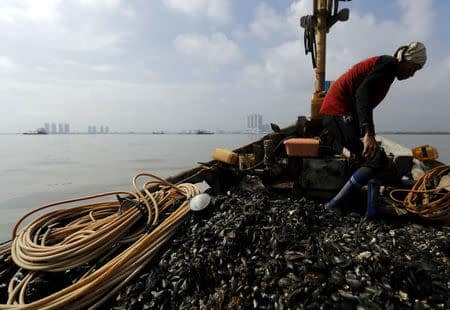
15. Plastic Found in Mussels From Arctic to China – Enters Human Food
OSLO, Norway — Tiny bits of plastic contaminate mussels from the European Arctic to China, a sign of the global spread of ocean pollution that can end up on people’s dinner plates. Mussels in apparently pristine Arctic waters had most plastic of any tested along the Norwegian coast, according to a study this month by the Norwegian Institute for Water Research (NIVA).
Last year, Chinese researchers suggested that mussels could be a global “bioindicator of microplastic pollution” because the molluscs live on the seabed where many plastics end up and, unlike fish, stay in the same place. Almost 200 nations signed a U.N. resolution this month to eliminate plastic pollution in the seas, ranging from bottles to supermarket bags and food packaging, estimated at 8 million tonnes a year.




